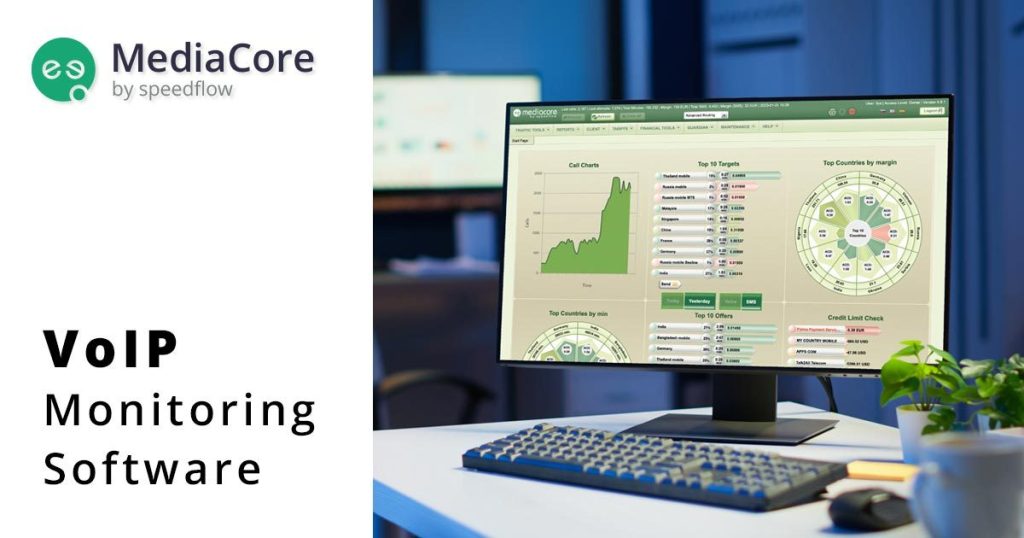Disaster-Proofing Communications: The Role of VoIP Monitoring in Recovery Strategies

No business likes to think about worst-case scenarios, but preparation is key to keeping operations running smoothly during unexpected events. Natural disasters, power outages, cyber-attacks—any of these can disrupt a company’s communication channels, leaving employees and customers frustrated. The ability to continue communicating effectively during a crisis is crucial, and this is where a strong disaster recovery strategy, including effective VoIP monitoring, becomes indispensable.
VoIP monitoring plays an essential role in disaster-proofing your communication systems. By maintaining consistent oversight of the network and call quality, VoIP monitoring helps ensure that your voice communication infrastructure is resilient, both during and after any type of disruption.
Contents
The Importance of Communications During a Disaster
During a disaster, reliable communication can make all the difference. Whether it’s keeping in touch with remote employees, providing updates to clients, or communicating directly with emergency services, businesses depend on their telephony systems for vital operations. Traditional telephone lines can be susceptible to physical damage, such as downed cables during a storm. However, VoIP relies on the internet, which provides more flexibility and resilience in the face of such events.
But, while VoIP provides some advantages, it is not immune to failure, particularly if a network is compromised or bandwidth becomes an issue. This is why ongoing VoIP monitoring is so important—without it, problems can escalate undetected, leading to potentially catastrophic communication breakdowns during times when reliability matters most.
How VoIP Monitoring Supports Disaster Recovery
Disaster recovery strategies aim to minimize downtime and ensure continuity when unforeseen incidents occur. Here’s how VoIP monitoring fits into a well-rounded recovery plan:
1. Early Detection of Issues
One of the greatest advantages of VoIP monitoring is the ability to detect issues early—sometimes before they even begin to affect call quality. During an event like a power outage or network disruption, small issues can escalate quickly into full-blown communication breakdowns. VoIP monitoring tools track performance metrics like packet loss, latency, and jitter in real-time. This allows IT teams to be alerted when thresholds are breached, enabling them to address the problem before it snowballs into a major failure.
2. Identifying Vulnerable Points in the Network
A disaster often exposes the vulnerabilities of an IT network. VoIP monitoring provides insights into which parts of your network are more likely to fail under pressure. By examining historical data, businesses can identify patterns of weaknesses and plan mitigations accordingly. For example, if a particular branch or server tends to drop connections during high network usage, steps can be taken to boost bandwidth or set up alternative routes for communication.
3. Backup and Redundancy Management
Having redundant systems in place is an important aspect of disaster recovery, and VoIP monitoring ensures that these systems work as intended. Whether you have a secondary data center, cloud-based failover options, or just additional bandwidth capacity, monitoring tools ensure that these backups activate without issue. The goal is to have a seamless switch to backup systems if the primary network goes offline—and without constant monitoring, there’s no guarantee that failover will work as planned.
Building Resilience with Proactive VoIP Monitoring
VoIP monitoring is not just a reactive measure; it is also a proactive way to build resilience into your communication systems. Here are some proactive approaches to strengthen VoIP reliability and support disaster recovery strategies:
1. Regular Network Health Checks
VoIP monitoring tools can be configured to conduct regular health checks of your network. These checks involve running synthetic tests, simulating calls, and checking for any signs of degradation or packet loss. By assessing the “health” of the system regularly, you gain valuable insights into how well your network will cope under pressure, helping you address any weak points before they turn into larger issues.
2. Prioritizing Critical Communications
During a disaster, not all communications are created equal. VoIP monitoring helps IT teams implement Quality of Service (QoS) protocols to prioritize critical communication channels, such as emergency calls or essential client contacts. By prioritizing these calls, the impact of network disruptions can be minimized. For instance, if bandwidth is limited, QoS ensures that mission-critical calls are completed without delay, even if less important services suffer temporary interruptions.
3. Bandwidth Management During Emergencies
During a crisis, network usage can fluctuate wildly. Employees may turn to video calls for status updates, customers may call in at higher-than-usual rates, and the load on the network can surge. VoIP monitoring helps manage bandwidth by identifying and eliminating unnecessary traffic, ensuring that voice communication always has enough capacity. This kind of active bandwidth management is crucial for maintaining call quality during times of extreme network stress.
Key Metrics for Effective Disaster Recovery VoIP Monitoring
VoIP monitoring tools offer a range of metrics that help ensure systems remain operational during disasters. Understanding and monitoring these metrics can be key to a successful disaster recovery strategy:
1. Packet Loss Monitoring
Packet loss occurs when data packets fail to reach their destination. During a disaster, increased packet loss is a clear indicator of network issues, whether due to bandwidth congestion or physical infrastructure damage. Keeping an eye on packet loss helps IT teams assess the health of the network and take necessary action before call quality deteriorates.
2. Latency and Jitter Control
Latency and jitter are two major factors affecting VoIP call quality. During a disaster, network routes can become unreliable, resulting in increased delays or uneven packet flow (jitter). Monitoring these metrics is essential for ensuring that calls remain intelligible and do not suffer from lag or choppy audio.
3. Failover Effectiveness
When disaster strikes, many businesses rely on failover systems to keep their communications running. VoIP monitoring allows you to track whether failover processes are working as intended. If a connection switches to a backup server, monitoring tools can help confirm that the switch happens seamlessly, without dropping calls or reducing call quality.
Leveraging VoIP Monitoring for a Faster Recovery
After the immediate crisis has passed, VoIP monitoring continues to play a vital role in the recovery phase. As normal operations resume, monitoring tools provide insights that help organizations understand how well their systems coped, what went wrong, and what can be improved for future events.
1. Post-Event Analysis
Analyzing the data gathered during a disruption can yield valuable lessons. Did a specific segment of the network fail? Was there a point when bandwidth reached critical levels? By understanding these aspects, IT teams can refine their disaster recovery plans to improve resilience.
2. Automated Reporting
In the aftermath of a crisis, clear reporting is necessary to evaluate the effectiveness of the response. Automated reports generated by VoIP monitoring tools offer a detailed picture of how the communication systems performed, helping stakeholders make informed decisions about future improvements.
Conclusion
Disaster recovery planning is a vital aspect of maintaining business continuity, and reliable communication is at the heart of any successful recovery strategy. VoIP monitoring plays an indispensable role in ensuring that voice communication systems remain operational, even during challenging times. By enabling early detection, managing network health, and providing insights for both immediate response and long-term improvements, VoIP monitoring helps businesses stay connected when it matters most. Preparing for the unexpected may seem daunting, but a proactive approach to monitoring can make all the difference, ensuring that your communication systems are not only functional but resilient in the face of adversity.





